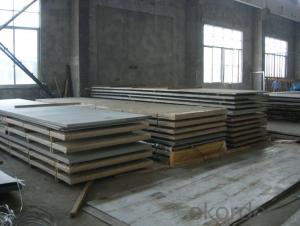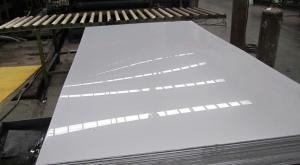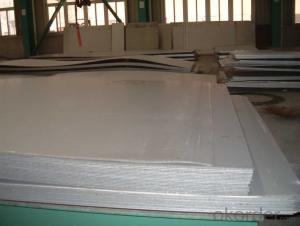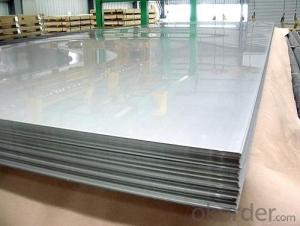Stainless Steel Sheet and plate with surface treatment
- Loading Port:
- Shanghai
- Payment Terms:
- TT OR LC
- Min Order Qty:
- 250 m.t.
- Supply Capability:
- 5000000 m.t./month
OKorder Service Pledge
OKorder Financial Service
You Might Also Like
Hot sale stainless steel sheet 201/202/304/304l/316/316l/430
Description of Stainless Steel Sheet:
Description | steel sheet,hot rolled steel sheet,cold rolled steel sheet, steel sheet,sheet,steel plate |
Standard | ASME, ASTM, EN ,BS,GB,DIN, JIS etc |
Application | Steel sheet applies to construction field, ships building industry, petroleum & chemical industries, war and electricity industries, food processing and medical industry, boiler heat exchanger, machinery and hardware fields. |
Packaging | Standard export sea-worthy packing |
Delivery time | 10-30 days |
Quality | No.1 |
Productivity | 500 tons/Day |
Note | Our company has cooperative relation between the domestic agents. Stainless steel sheet can be made accordingto the customers requirements. Fasten delivery. Quality assured. |
Contacts | If you have any question,please feel free contact me. |
Stainless steel sheet surface finish characteristics
Surface finish | Characteristics and application |
2B | The surface brightness and flatness of no2B is better than no2D. then through a special surface treatment to improve its mechanical properties,No2B could nearly satisfy comprehensive uses. |
No.1 | Polished with abrasive belt of grit#100-#200, have better brightness with discontinuous coarse stria, used as inner and external ornaments for building, electrical appliances and kitchen utensils etc. |
No.4 | Polished with abrasive belt of grit #150-#180,have better brightness with discontinuous coarse stria, but thinner than No3, are used as bathtub buildings inner and external ornaments electrical appliances kitchen utensils and food processing equipment etc. |
HL | Polished with abrasive belt of grit #150-#320 on the NO.4 finish and has continuous streaks, mainly used as buildings ornaments elevators, door of building, frontal plate etc. |
BA | Cold rolled, bright annealed and skin-passed, the product have excellent brightness and good reflexivity like mirror, kitchen apparatus, ornament etc. |
8K | The product have excellent brightness and prefer reflexivity can to be the mirror. |
Main Features of stainless steel sheet :
•Escalator, Elevator, Doors
•Furniture
•Production tools, Kitchen appliances, freezers, cold rooms
•Auto Parts
•Machinery and Packaging
•Equipment and Medical devices
•Transport system
Product Details:
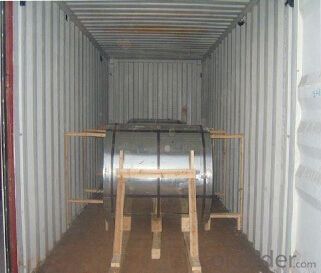
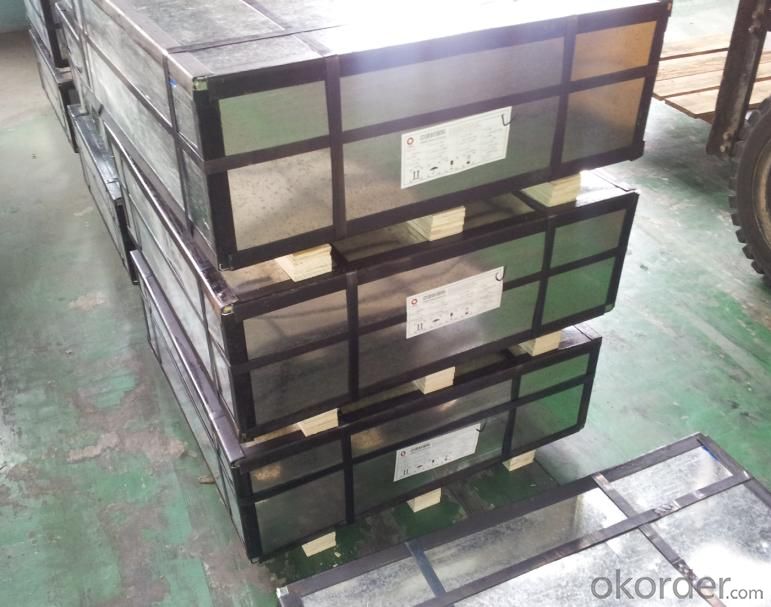
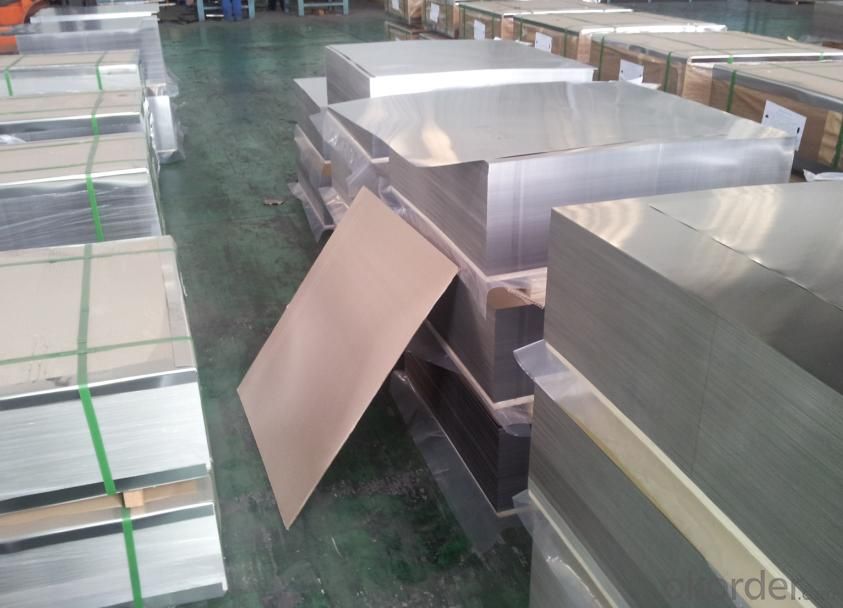
Sandard Seaworth Packing(wooden packing with water proof paper)
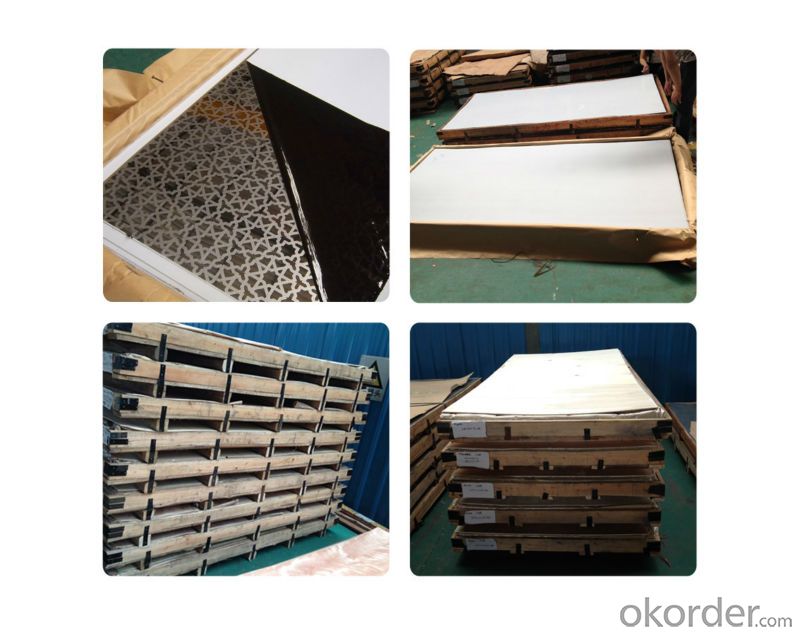
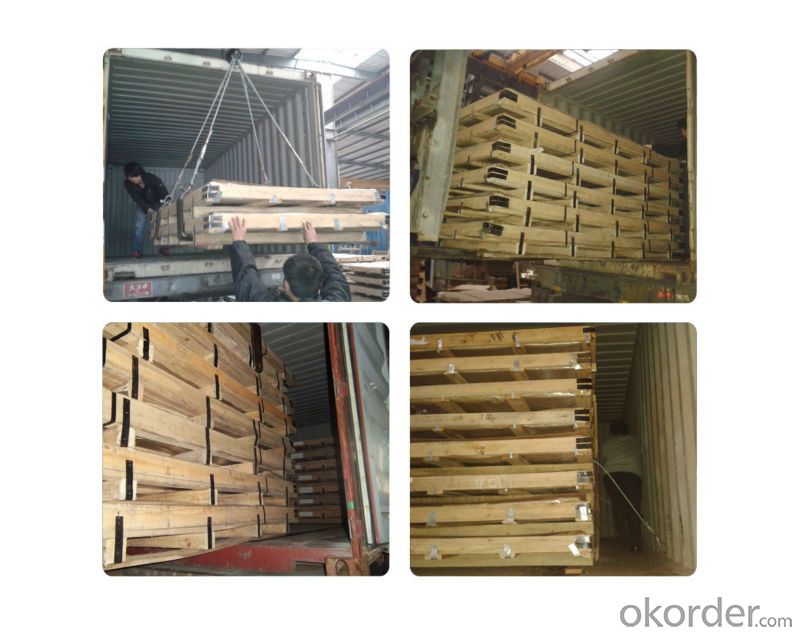
FAQ:
1. What's the quality?
very fine
2. How long get reply?
within 24 hours
If you have any question about stainless steel sheets,donot forget to sending the email to Us! You will get the competitive Price and have a very good experience about the Buying Process! CNBM International Corporation is always your trustful friend!
- Q:Can stainless steel sheets be used in industrial applications?
- Yes, stainless steel sheets can definitely be used in a wide range of industrial applications. Stainless steel is known for its excellent corrosion resistance, durability, and strength, making it ideal for various industrial environments. It is commonly used in sectors such as automotive, aerospace, construction, manufacturing, food and beverage, chemical processing, and many others. Stainless steel sheets are often used for their ability to withstand high temperatures, harsh chemicals, and extreme conditions. They can be fabricated into different shapes and sizes, making them suitable for a wide range of applications. Stainless steel sheets are commonly used for manufacturing equipment and machinery, storage tanks, pipelines, architectural structures, and as a protective layer on surfaces that require resistance to corrosion. Furthermore, stainless steel sheets offer hygienic properties, making them suitable for applications in the food and beverage industry. They are easy to clean, maintain, and sterilize, ensuring compliance with strict industry standards. In summary, stainless steel sheets are versatile and reliable materials that can be effectively used in various industrial applications due to their exceptional corrosion resistance, durability, strength, and hygienic properties.
- Q:What are the different types of edge profiles for stainless steel sheets?
- Stainless steel sheets can be enhanced with various edge profiles to meet both aesthetic and functional needs. The following are a selection of these profiles: 1. The Square Edge: This is the simplest and most common profile, featuring a straight, unadorned edge. 2. The Beveled Edge: By angling and shaping the edge, a beveled profile adds a refined and polished look with a slight slope or chamfer. 3. The Rounded Edge: Also known as the bullnose edge, this profile smooths out sharp corners, reducing the risk of injury and creating a curved and sleek appearance. 4. The Full Radius Edge: This profile involves a complete semicircular or rounded edge, offering a more pronounced curved effect compared to the rounded edge. 5. The Ogee Edge: With a double curve of concave and convex shapes, the ogee edge adds an elegant and decorative touch, perfect for applications requiring a more ornamental appearance. 6. The Dupont Edge: This sleek and modern profile features a straight edge with small bevels on the top and bottom sides, often used in contemporary design applications. 7. The Knife Edge: By sharpening the edge to a thin, precise edge, the knife edge profile is ideal for applications requiring a clean-cut and precise appearance. These examples provide just a glimpse of the edge profiles available for stainless steel sheets. The choice of profile depends on the specific requirements, style preferences, and intended use of the project.
- Q:How is stainless steel different from other types of steel?
- Stainless steel is different from other types of steel primarily because of its high resistance to corrosion, making it much more durable and long-lasting. Additionally, stainless steel contains a minimum of 10.5% chromium, which forms a protective layer on the surface, preventing staining and rusting. This unique composition also gives stainless steel its distinctive shiny appearance, making it aesthetically appealing.
- Q:Are stainless steel sheets suitable for food processing or medical applications?
- Yes, stainless steel sheets are highly suitable for food processing and medical applications. Stainless steel is a popular choice in these industries due to its numerous beneficial properties. Firstly, stainless steel is resistant to corrosion, making it ideal for environments where hygiene and cleanliness are of utmost importance, such as food processing plants and medical facilities. Secondly, stainless steel is a non-porous material, meaning it does not absorb or retain bacteria, germs, or odors. This makes it easy to clean and maintain high levels of sanitation, crucial in food processing and medical settings where contamination must be minimized. Additionally, stainless steel has excellent strength and durability, allowing it to withstand harsh conditions, heavy use, and frequent cleaning without deteriorating. This makes stainless steel sheets a reliable and long-lasting choice for these demanding applications. Furthermore, stainless steel is non-reactive with food and many medical substances, ensuring that it does not leach any harmful chemicals or contaminants into the products being processed or the patients being treated. This is crucial for maintaining the safety and integrity of both food and medical materials. In conclusion, stainless steel sheets are highly suitable for food processing and medical applications due to their corrosion resistance, non-porous nature, strength, durability, and non-reactive properties. Choosing stainless steel ensures the highest standards of hygiene, cleanliness, and safety in these industries.
- Q:What is the abrasion resistance of stainless steel sheets?
- The abrasion resistance of stainless steel sheets is generally high due to their strong and durable nature. They are able to withstand mechanical wear and tear, making them suitable for applications where frequent contact or friction occurs.
- Q:How do stainless steel sheets compare to other materials?
- Stainless steel sheets have several advantages over other materials, making them a popular choice in various industries. Firstly, stainless steel is known for its exceptional durability and strength. It can withstand high temperatures, pressure, and corrosion, making it suitable for a wide range of applications. This durability ensures a longer lifespan and reduces the need for frequent replacements, saving both time and money. Secondly, stainless steel sheets have excellent resistance to corrosion and rust. This property is particularly important in environments with high humidity or exposure to chemicals, as it prevents degradation and maintains the integrity of the material. Other materials, such as aluminum or carbon steel, may require protective coatings or regular maintenance to achieve similar levels of corrosion resistance. Furthermore, stainless steel sheets have a clean and smooth surface finish, making them aesthetically pleasing and easy to clean. This quality is crucial in industries such as food processing, pharmaceuticals, and healthcare, where hygiene and cleanliness are paramount. Stainless steel sheets also offer versatility in terms of fabrication and customization. They can be easily formed, welded, and shaped into different sizes and configurations, allowing for a wide range of applications. This versatility makes stainless steel sheets suitable for architectural, automotive, and industrial uses. Lastly, stainless steel is environmentally friendly. It is 100% recyclable, meaning that it can be melted down and reused without any loss in quality or performance. This recyclability reduces the demand for new materials and lessens the environmental impact associated with manufacturing processes. In summary, stainless steel sheets outperform other materials in terms of durability, corrosion resistance, cleanliness, versatility, and environmental sustainability. These qualities make stainless steel sheets a superior choice for various industries and applications.
- Q:What are the different types of stainless steel sheet alloys?
- There are several different types of stainless steel sheet alloys, each with their own unique properties and characteristics. Some of the most common types include: 1. Austenitic stainless steel: This is the most widely used type of stainless steel sheet alloy. It is known for its high corrosion resistance and excellent formability. Austenitic stainless steel grades include 304 and 316, which are commonly used in various industries such as food processing, pharmaceuticals, and architecture. 2. Ferritic stainless steel: This type of stainless steel sheet alloy has a higher carbon content and lower chromium content compared to austenitic stainless steel. Ferritic stainless steel is known for its good corrosion resistance and high strength. It is often used in applications where high temperature resistance is required, such as automotive exhaust systems. 3. Martensitic stainless steel: Martensitic stainless steel sheet alloys have a higher carbon content and lower chromium content compared to both austenitic and ferritic stainless steels. They are known for their high strength and hardness, as well as their good corrosion resistance. Martensitic stainless steel grades are commonly used in applications such as cutlery, surgical instruments, and turbine blades. 4. Duplex stainless steel: This type of stainless steel sheet alloy is a combination of austenitic and ferritic stainless steels. It offers a good balance of strength and corrosion resistance, making it suitable for a wide range of applications. Duplex stainless steel grades are commonly used in the chemical processing, oil and gas, and marine industries. 5. Precipitation-hardening stainless steel: This type of stainless steel sheet alloy is heat treatable and can achieve high strength and hardness through a precipitation-hardening process. Precipitation-hardening stainless steel is commonly used in aerospace and defense applications, where high strength and corrosion resistance are critical. These are just a few examples of the different types of stainless steel sheet alloys available. The choice of alloy depends on the specific application requirements, such as corrosion resistance, strength, and temperature resistance.
- Q:Can stainless steel sheets be embossed or textured?
- Yes, stainless steel sheets can be embossed or textured. This process involves imparting a pattern or design onto the surface of the stainless steel sheet through the use of specialized machinery and techniques. Embossing creates a raised pattern, while texturing creates a textured or brushed finish on the surface of the stainless steel sheet. These techniques can be used to add aesthetic appeal to stainless steel sheets, making them suitable for various applications such as architectural, decorative, or industrial purposes. Additionally, embossed or textured stainless steel sheets can also provide functional benefits such as improved grip or reduced glare.
- Q:How do I prevent stress relaxation on stainless steel sheets?
- Stress relaxation is a phenomenon that occurs in stainless steel sheets when they are subjected to prolonged exposure to high temperatures or constant stress. To prevent stress relaxation on stainless steel sheets, you can take the following measures: 1. Proper selection of stainless steel grade: Different grades of stainless steel have varying resistance to stress relaxation. Choose a grade that offers high resistance to this phenomenon, such as austenitic stainless steels like Type 304 or Type 316. 2. Avoid excessive temperatures: Stainless steel sheets should be operated within their recommended temperature limits. Exposing them to temperatures beyond their specified range can accelerate stress relaxation. Ensure that the operating temperature remains within the permissible limits. 3. Control the stress levels: Minimize the stress levels applied to the stainless steel sheets during fabrication and installation. Avoid excessive bending, stretching, or deformation that could introduce stress into the material. Properly design and fabricate the components to reduce stress concentration points. 4. Post-weld heat treatment: If the stainless steel sheets are welded, consider performing a post-weld heat treatment. This process involves subjecting the welded area to controlled heating and cooling cycles to relieve residual stresses and minimize the potential for stress relaxation. 5. Reduce exposure to aggressive environments: Stainless steel sheets are corrosion-resistant, but exposure to aggressive chemicals or environments can accelerate stress relaxation. Avoid prolonged exposure to corrosive substances or environments that may compromise the material's integrity and cause stress relaxation. 6. Regular inspections and maintenance: Periodically inspect the stainless steel sheets for signs of stress relaxation, such as deformation, cracks, or changes in dimensions. Regular maintenance and timely repairs can help identify and address any issues before they worsen. 7. Consult with experts: If you are unsure about the specific requirements to prevent stress relaxation in your stainless steel sheets, consult with metallurgical experts or stainless steel manufacturers. They can provide guidance on the best practices and materials to ensure long-term performance and prevent stress relaxation. By implementing these preventive measures, you can significantly reduce the risk of stress relaxation in stainless steel sheets, ensuring their durability and maintaining their structural integrity over time.
- Q:What are the different types of stainless steel sheets?
- There are several different types of stainless steel sheets, including austenitic, ferritic, martensitic, and duplex stainless steel sheets. Each type has unique properties and is suitable for different applications.
1. Manufacturer Overview |
|
|---|---|
| Location | |
| Year Established | |
| Annual Output Value | |
| Main Markets | |
| Company Certifications | |
2. Manufacturer Certificates |
|
|---|---|
| a) Certification Name | |
| Range | |
| Reference | |
| Validity Period | |
3. Manufacturer Capability |
|
|---|---|
| a)Trade Capacity | |
| Nearest Port | |
| Export Percentage | |
| No.of Employees in Trade Department | |
| Language Spoken: | |
| b)Factory Information | |
| Factory Size: | |
| No. of Production Lines | |
| Contract Manufacturing | |
| Product Price Range | |
Send your message to us
Stainless Steel Sheet and plate with surface treatment
- Loading Port:
- Shanghai
- Payment Terms:
- TT OR LC
- Min Order Qty:
- 250 m.t.
- Supply Capability:
- 5000000 m.t./month
OKorder Service Pledge
OKorder Financial Service
Similar products
New products
Hot products
Related keywords
